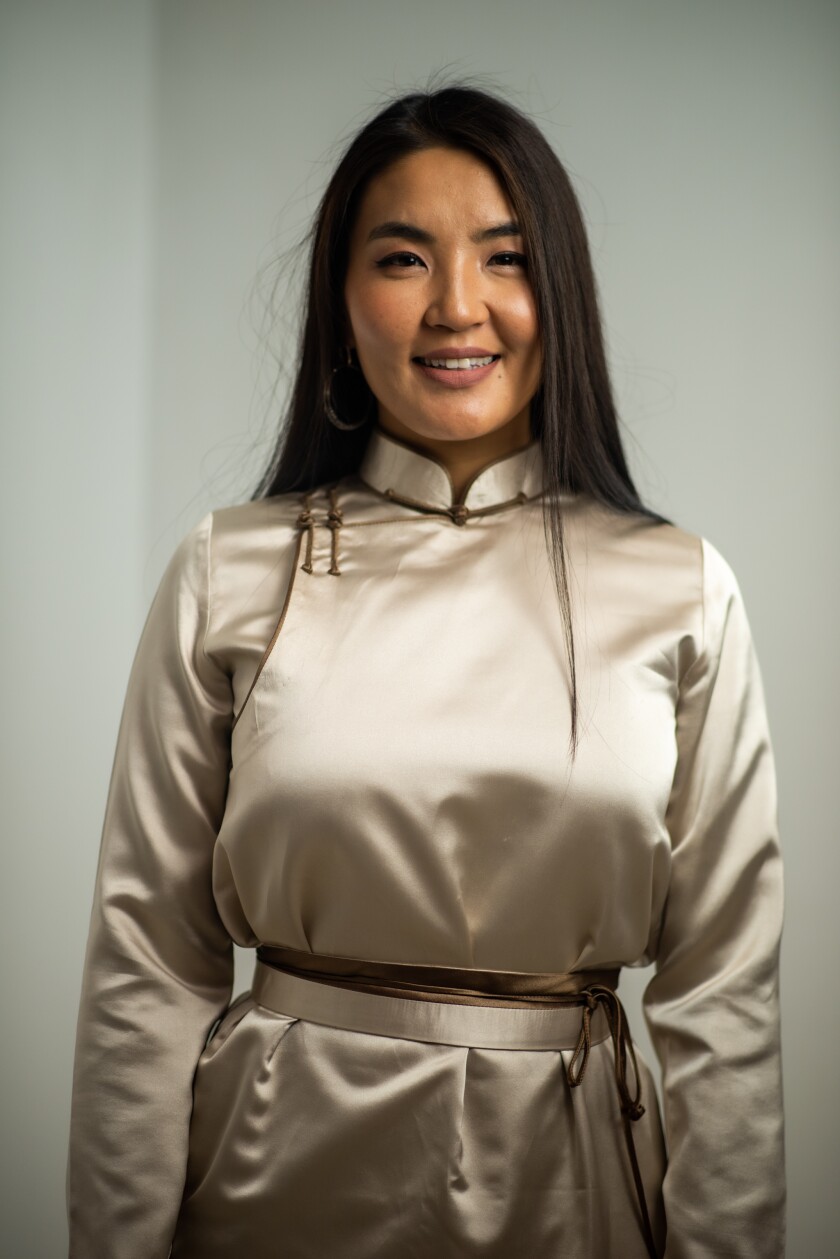
BYU–Hawaii students said the traditional clothing and accessories from their home countries reflect a piece of who they are and where they are from. They shared wearing their favorite pieces makes them feel proud of their culture, motivating them to share who they are with others.
Tongan kiekie and ta’ovala
Lesieli Noema, a sophomore from Tonga majoring in accounting and computer science, said growing up in Tonga, she was taught to have a strong sense of respect for her culture and those around her. Noema said wearing humble clothing is a key part of her personality and is a way to show respect.
Noema said girls in Tonga usually wear a kiekie, which looks similar to a belt and is made from plants, like the hibiscus tree bark or mulberry tree bark. The kiekie is worn at formal gatherings or church meetings. She explained women wear these as a sign of respect to those around and for the occasion. People who work for the government must wear them as well, she added.
Joshua Cocker, a senior from Tonga majoring in communications, said wearing the clothing of his culture defines his identity, status and history. He explained Tongan clothes are traditionally made from plants usually woven or knitted into a sash or mat. Cocker said a ta’ovala is one of the most important pieces of traditional clothing and is worn by Tongan men.
Cocker said wearing ta’ovala is a sign of respect, so they wear it for special occasions. He explained the bigger the ta’ovala, the higher the status of the person in society. At funerals, bigger ta’ovala represents a close relation to the deceased person.
Mongolian deel

Davaasuren Myagmarjav, a junior from Mongolia majoring in accounting, said Mongolian traditional clothes reflect their history of nomadic lifestyle. She explained Mongolian clothes can be worn all day long and are designed to be comfortable because they have to labor and move a lot, such as when riding a horse. She clarified that nowadays, urban Mongolians wear modern clothing, but the countryside herders still keep to the nomadic lifestyle and wear traditional clothes.
Serena Dugar Ioane, a Winter 2020 alumna who majored in communications, said the most significant piece of Mongolian traditional clothing is deel, which looks like a long dress with sleeves and a collar.
Myagamarjav shared the sleeves and the collar of deel have specific and intricate designs that show what tribe individuals are from.
Ioane said Mongolia has four seasons, including an extremely cold winter, a windy spring, a hot summer and a rainy fall. As a result, Mongolians have various deels for the different seasons, chores and occasions. “Winter deels are made of thick and warm materials, such as cashmere, wool and other animal skins to help us survive the winter coldness. Summer deels are much thinner and colorful,” she commented.
She shared it was a tradition for mothers to sew new deel for their family members on traditional holidays, like the Lunar New Year, Naadam or Independence Day, as well as other special occasions, such as weddings and hair cutting ceremonies. Deel is usually worn with a belt, she added.
“Almost every Mongolian wears deel on traditional holidays nowadays. Holiday deels are very fashionable and are made of expensive, fancy materials, such as silk,” Ioane explained. “Silks have different designs, patterns and prints on it, and it has special meaning behind it.”
Myagamarjav asserted the designs relate back to their nomadic lifestyle and nature, such as clouds, mountains, flowers and so on. Having these parts of their culture still in practice reminds her of her ancestors as well as her home, she said.
Mongolian shanh

Bazarragchaa Byambanorov, a sophomore from Mongolia majoring in psychology, said her favorite piece of traditional clothing is actually an accessory. It’s called a shanh, she explained, and it is a head decoration for women. Historically, it is only worn by princesses, queens or other high ranking officials’ wives and daughters, she explained.
Traditionally, it is made of precious metals, like gold, silver or pearls and precious stones, which she said represents wealth or the social rank of the family. She explained the shanh has come back into modern fashion and is worn at holidays, weddings or other special occasions. Mongolian celebrities even wear it at concerts or in music videos, Byambanorov added.
Wearing this headpiece is a representation of her culture and means a lot to her because she said she is able to display her culture in such a beautiful way. “I love wearing it because I am proud of my country and culture, and it also compliments my beauty.”
Indonesian sarung batik

Jonathan Lopis, a senior from Indonesia majoring in cultural anthropology, said a traditional piece of clothing Indonesians adopted from Sri Lanka and India is the sarung batik. A sarung is a long piece of cloth that is wrapped around a man’s waist to make a skirt that reaches his ankles, he said.
Lopis said a batik is a traditional Indonesian technique of wax-resistant dying applied to the entire cloth so it can be different colors, depending on what province you are from. He shared the sarung batik’s complex design symbolizes their culture.
He said the different colors of the sarung batik mean different things. For instance, the base color is usually brown to symbolize the land or a message from their ancestors, he clarified. The designs on the sarung, he added, are complicated and are a specific message from one generation to another.
Lopis shared traditionally the sarung would be handed down from generation to generation. However, more recently, people don’t pass down their sarungs but rent them for events, like a wedding, because it is traditionally worn for special occasions. •
